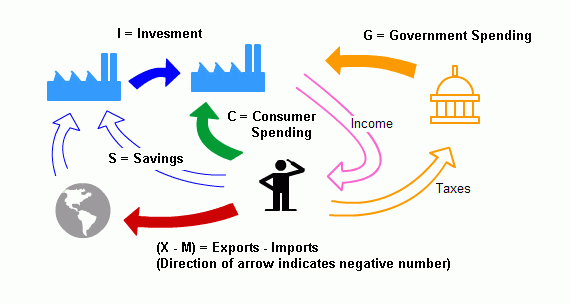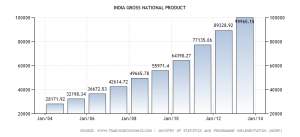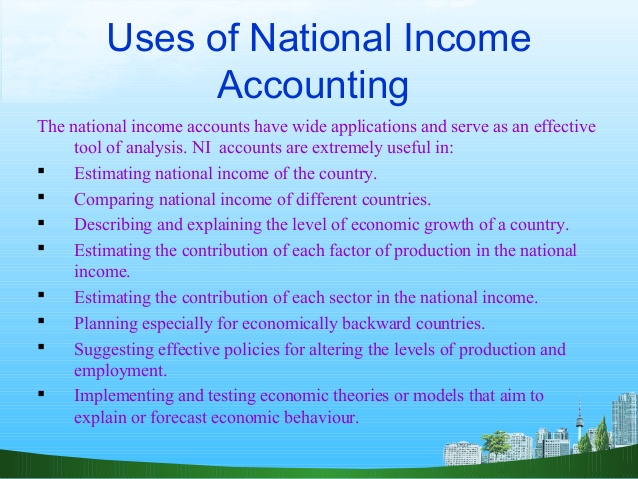National income estimates are the most reliable macroeconomic indicators of an economy. Therefore, it is essential for students to be aware of National Income Concepts. Changes in national income measure the rate of growth of the economy.
Similarly, changes in the structure of national income of an economy reflect the changing significance of different sectors. In India,
national income, as also per capita income, have been continuously increasing. In more recent years, the rate of growth of national income has
accelerated. It indicates that the economy has been growing at a faster rate in recent years than in the past. Along with this, the structure of national income has also undergone a change, the tertiary sector has emerged as the dominant sector of the economy.
The task of preparing national income estimates has been assigned to the Central Statistical Organisation (CSO). The CSO has been producing annual official estimates of national income of India since 1955 and publishing the same in its annual report National Accounts Statistics.
<< Read list of Countries their currencies and capitals here>>
Concept of National Income
National income accounting comprises of four concepts of calculations- GDP, NDP, GNP, NNP.
Here, we discuss them and other related terms in a very objective way.
1. Factor cost is the input cost that producer has to incur in the process of production. It includes cost of capital – loan inetrest, prices of raw materials, labour, power, rent, etc. Can be termed as Production cost.
2. Market cost is calculated after adding indirect taxes to the factor cost of the product. It is basically the cost at which the goods reach the market. Also termed as EX-FACTORY PRICE. In India we calculate income at factor cost because of non-uniform taxes.
- National Income:The sum total of factor of incomes accruing to the residents of the country, both from their activities within and outside the economic territory is the national income of the country.
- National income is calculated for a particular period, normally a financial year (In India, financial year means April 1 to March 31 of next year). Net factor income from abroad is added to the domestic product to get the value of National Income.

- National Income = C + I + G + (X – M)
Where,C = Total consumption expenditure
I = Total investment expenditure
G = Total government expenditure ; X – M = Export – Import
The National Income concepts include the following important terms:
<< Read about functions of SEBI here>>
Gross Domestic Product (GDP)
Gross domestic product is the value of all final goods and services produced within the boundary of a nation during one year. In India one year means from 1st April to 31st March of the next year.
GDP calculation includes income of foreigners in a Country but excludes income of those people who are living outside of that country.
<< Read about biosphere structure>>
Net Domestic Product (NDP)
NDP is calculated by deducting the depreciation of plant and Machinery from GDP.
NDP = Gross Domestic Product – Depreciation
Gross National Product (GNP)

GNP of India
GNP is the value of all final goods and services produced by the residents of a country in a financial year (i.e., 1st April to 31st March of the next year in India).
While Calculating GNP, income of foreigners in a country is excluded but income of people who are living outside of that country is included. It is the GDP of a country added with its income from abroad.
GNP = GDP + X – M
Where,X = income of the people of a country who are living outside of the Country
and M = income of the foreigners in a country
- India’s GNP is always lower than its GDP.
- This is the national income according to which the IMF ranks nations.
- It allows for knowledge of factors in production behaviour and pattern of an economy’s dependence on outside world, nature of human resources internationally, position in world economics.
- It indicates both qualitative as well as quantitative aspects of an economy in a more exhaustive fashion than GDP.
Intermediate products = one production unit purchasing from other for resale
Final product = all goods and services purchased for consumption and investment , and not for resale
Value added = Value of output – Intermediate cost
Gross value added = net value added + depreciation
Indirect tax = all taxes levied on production, finally paid by consumer of buyer Ex – sales tax, excise, customs
Subsidies = Financial help given by the government to the production units for selling the product at lower prices
<< Read about national parks in India here >>
Net National Product (NNP)
Net National Product (NNP) in an economy is the GNP after deducting the loss due to depreciation.
NNP = GNP – Depreciation
- NNP at Factor Cost:It is the value of NNP when the value of goods and services is taken at the production cost.
- NNP at Market Price:It is the value of NNP at consumer cost.
NNP at market cost = NNP at factor cost + Indirect taxes – Subsidies
Closed Economy: An economy that does not maintain any economic relations with the rest of the world. Economic Goods: Those goods which are scarce in supply and, hence, command a price.
Economic Growth: A sustained increase in real national income of a country.
Nominal National Income: The money value of all the final goods and services produced in an economy during a year, estimated at current prices.
Real National Income: The money value of all the final goods and services produced in an economy during a year, estimated at some fixed prices.
Subsidy: It is the grant given on current account by the Government to the private industries and public corporations for selling certain goods at a price fixed by the Government.
National Income Measurement:
- Primary sector: all production units engaged in exploitation of natural resources like Agriculture, Fishing, Mining and Quarrying , Forestry and Logging
- Secondary sector: all production units engaged in transforming one good to another like Registered manufacture, unregistered, Construction, Electricity Gas Water supply
- Tertiary sector: all units engaged in producing services like Banking&Insurance, Trade, hotel, restaurant, transport, storage , Real estate dwelling, Public administration & defence, other services.
Why should we calculate national income?






